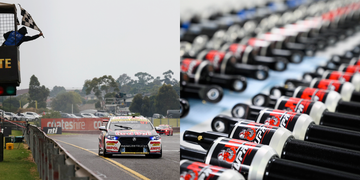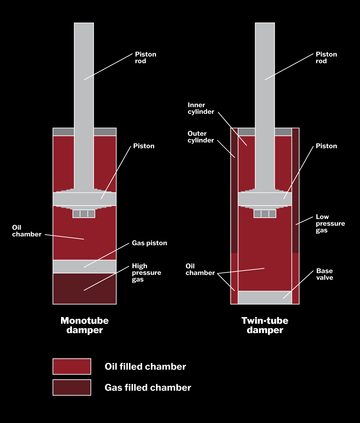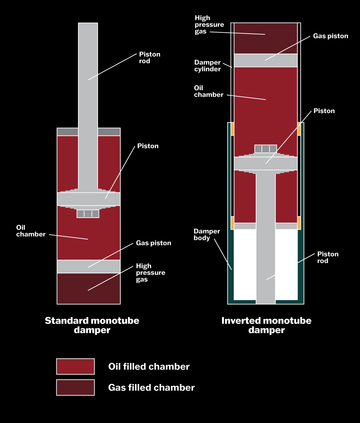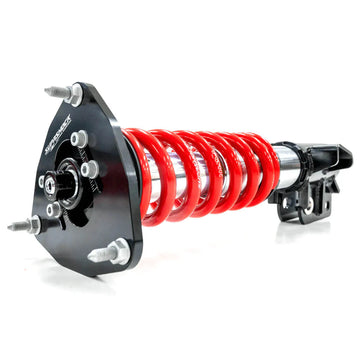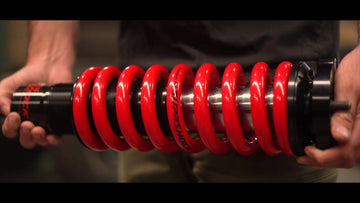V8 Supercars is an Australian touring car racing category that features high-performance race cars based on production vehicles from various manufacturers. The series is known for its competitive, wheel-to-wheel racing and attracts large crowds at events across Australia and New Zealand.
The races in the V8 Supercars series take place on a mix of street circuits, permanent road courses, and oval tracks. The races range from short, sprint events to longer endurance races, such as the famous Bathurst 1000. V8 Supercars use Pedders Dampers by Supashock.
Having a high-performance suspension system is crucial in V8 Supercars because the suspension has a significant impact on the car's handling, stability, and overall performance. A well-tuned suspension system can help a driver navigate the twists and turns of the track more quickly and with greater precision. It can also help maintain stability at high speeds, improve traction, and reduce tire wear. All of these factors are essential in a series as competitive as V8 Supercars, where even the smallest advantage can make a significant difference in the outcome of a race.
What is independent suspension?
V8 Supercars are typically equipped with independent suspension systems, which allow each wheel to move independently, providing better handling, traction, and control. This type of suspension system is the most commonly used in modern performance vehicles, including race cars, because of its many advantages over other suspension designs.
An independent suspension system consists of a series of components, including control arms, springs, dampers, and anti-roll bars, that work together to keep the car's wheels in contact with the road while providing a comfortable and stable ride. Each wheel is mounted to its own suspension assembly, allowing it to move up and down independently of the other wheels.
The advantages of independent suspension are many. Firstly, it allows each wheel to respond individually to bumps and dips in the road, which reduces the amount of weight transfer between the wheels and improves traction. This is particularly important in racing, where maintaining optimal grip and control is essential.
Secondly, independent suspension allows for better handling, as it allows the car to maintain a more even weight distribution during cornering. This results in a car that is more stable and easier to control through turns, which is essential for success in V8 Supercars.
Finally, independent suspension can also improve ride quality, as it allows each wheel to react to bumps and other road irregularities independently. This results in a smoother, more comfortable ride for the driver and passengers, which can be important during long endurance races.
What is double wishbone suspension?
Double wishbone suspension is a popular suspension design used in V8 Supercars due to its ability to provide precise and accurate suspension movement, resulting in better handling and responsiveness. This suspension design is widely used in many high-performance vehicles, including race cars, because of its ability to offer optimal suspension geometry, which translates into superior handling and driving dynamics.
The double wishbone suspension system consists of two "wishbone-shaped" control arms, which attach to the car's chassis at one end and to the wheel hub at the other. The upper and lower control arms are attached to the wheel hub at two different points, forming a "double wishbone" shape. This design allows for a more accurate and precise movement of the suspension, providing better handling and responsiveness.
One of the key advantages of double wishbone suspension is that it allows for a more accurate and precise control of the wheel's camber angle, caster angle, and toe angle. This means that the car's wheels are kept in optimal contact with the road, improving traction and handling. Additionally, double wishbone suspension provides better wheel control, reducing body roll during cornering, which results in more precise and responsive handling.
Another advantage of double wishbone suspension is that it can be easily adjusted and tuned to suit different driving styles and track conditions. This allows drivers and race teams to fine-tune the suspension to achieve the best possible performance, giving them a competitive advantage over other teams.
What are adjustable dampers?
V8 Supercars use adjustable dampers, which allow the driver to adjust the suspension settings to suit different tracks and racing conditions. These adjustable dampers are an essential component of the V8 Supercar suspension system, providing drivers with the ability to fine-tune the suspension for optimal performance.
Adjustable dampers work by allowing drivers to adjust the damping rate, which is the rate at which the suspension compresses and rebounds. This can be done via adjusters that change the position of a valve inside the damper or by changing the size of the valve opening. This means that the team can adjust the level of damping to suit different driving conditions, such as hard or soft damping for rough or smooth tracks, respectively.
The ability to adjust the damping rate is particularly important in V8 Supercars, where the team needs to make rapid adjustments to the suspension to deal with changes in track conditions or driving style. By adjusting the damping rate, drivers can improve the car's handling, stability, and vehicle dynamics, which are essential for success in high-performance driving.
Adjustable dampers allow the team to fine-tune the suspension to suit driver style, track and track conditions. For example, bumpy, uneven street circuits generally require softer spring rates and damping. With adjustable dampers, teams can customise the suspension settings to suit their driver’s individual needs, giving them a competitive advantage over other drivers.
What are coilover springs?
V8 Supercars use coil springs, which are designed to be mounted over a shock absorber or damper, with the coil wrapping around the shock body. Coilover springs are popular in racing because they offer a high level of adjustability, allowing drivers to fine-tune the suspension to their driving style and the specific track conditions.
One of the key advantages of coilover spring setup is ride height adjustability. By adjusting the spring perch, the driver can change the preload on the spring, which affects the car's ride height. A higher ride height can be beneficial on bumpy or uneven tracks and wet conditions, while a lower ride height can improve aerodynamics and handling on smoother tracks.
In addition to adjusting the ride height, coilover springs can also be swapped out with different springs to change the spring rate, which is the amount of force required to compress the spring. By changing the spring rate, drivers can adjust the level of stiffness in the suspension, which can have a significant impact on the car's handling and responsiveness.
How can I maintain and tune the suspension in my V8 supercar for optimal performance?
Maintaining and tuning the suspension system is essential for optimal performance and handling in V8 Supercars. Here are some tips and best practices for maintaining and tuning the suspension system:
Regular inspections
Regular inspections of the suspension system are critical to identifying any potential issues or worn/damaged components. Inspect the suspension system after every race weekend, or more frequently if you experience any issues during a race.
Adjustments
Make adjustments to the suspension system based on track conditions, weather conditions, and driving style. Adjusting the ride height, spring rate, and damping rate can improve handling and lap times.
Replacing worn or damaged components
Replace any worn or damaged suspension components immediately. Suspension components such as shocks, springs, and control arms should be replaced on a regular basis to ensure optimal performance.
Use high-quality components
Invest in high-quality suspension components, such as coilover springs, adjustable dampers, and carbon fibre components. High-quality components can improve handling and performance while reducing weight.
Maintain proper alignment
Proper alignment is crucial for optimal handling and performance. Ensure that the suspension system is aligned correctly, and check the alignment after any adjustments or component replacements.
Test and fine-tune
Test the suspension system after any adjustments or component replacements, and fine-tune as necessary. Use telemetry data and feedback from the driver to make adjustments and improve performance.
Work with a trusted mechanic
Working with a trusted mechanic who has experience with V8 Supercars can be invaluable in maintaining and tuning the suspension system. A knowledgeable mechanic can offer insights and recommendations on how to optimise the suspension system for optimal performance.
By following these tips and best practices, you can maintain and tune the suspension system in your V8 Supercar for optimal performance and handling. Regular maintenance and adjustments can improve lap times and give you a competitive edge on the track.

